News
Congratulations to Fabian Mattig
18. December, 2024
Fabian Mattig successfully defended his master thesis (A Combined Spectroscopic and Photometric Investigation of Hot Subdwarf Binaries). This excellent work included extensive observations with the SOAR telescope in Chile. Many thanks go to our friend and collaborator Brad Barlow, who made this all possible.
Congratulations to Jeremias Siehr
15. November, 2024
Jeremias Siehr successfully finished the bachelor by submitting his thesis (Eclipse-timing analysis of the close hot subdwarf binary HS 0705+6700). For this project, he performed extensive observations with the OST telescope at the roof of our institute and showed that cool science on hot subdwarfs can be done with it. We wish him a good time in Sweden.
New magnetic subdwarfs forming a remarkably uniform class
November, 2024
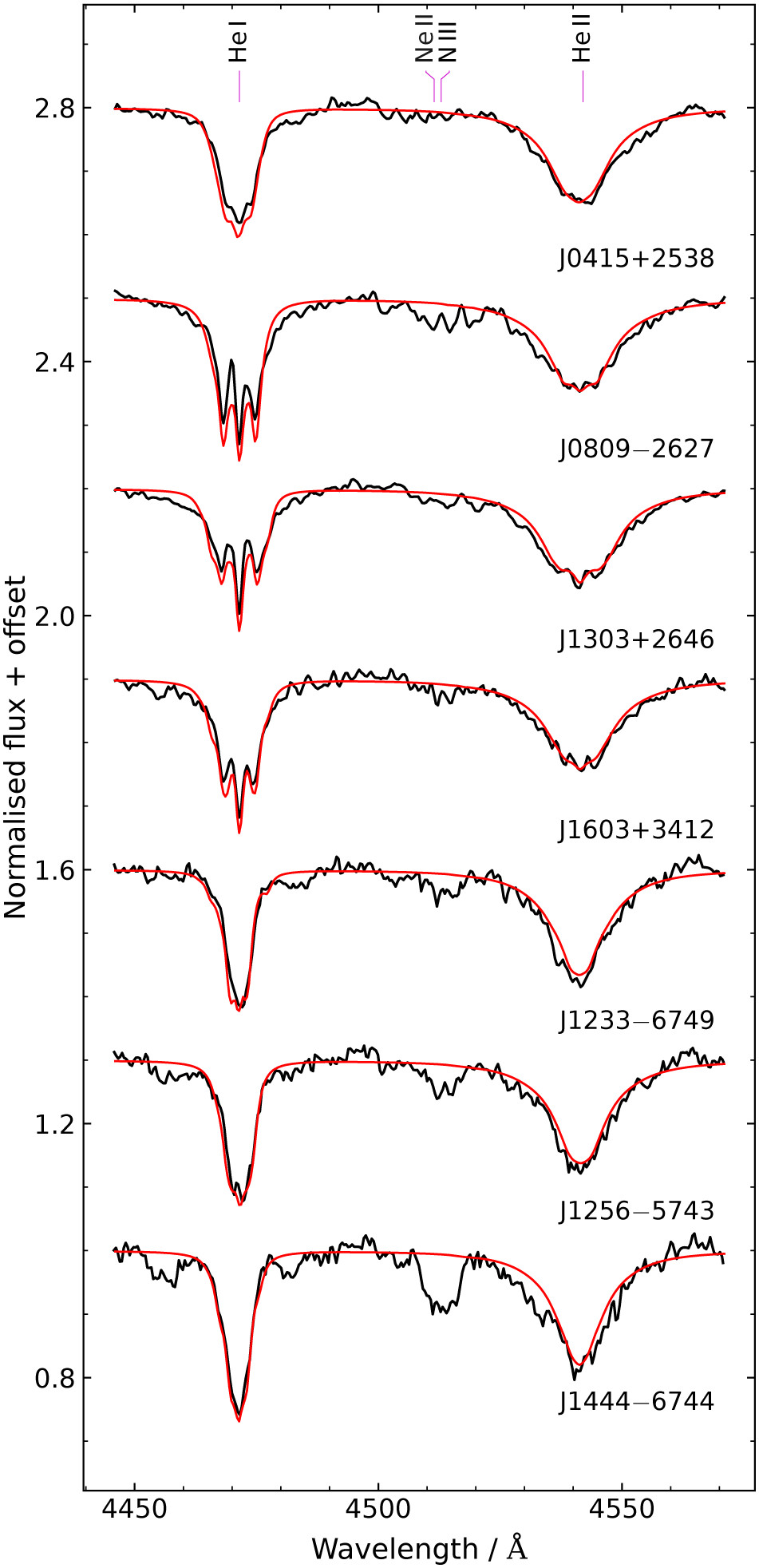
Selected spectral lines of the known four (top) and newly discovered three magnetic He-sdOs. Image credit: A&A.
The SALT survey revealed three new He-sdOs belonging to the rare class of such stars showing Zeeman-splitting caused by magnetic fields. These stars are almost identical in terms of atmospheric parameters to those previously known. The close similarity of all known He-sdOs implies a finely tuned formation channel. We propose the merging of a He white dwarf with a H+He white dwarf. A differential rotation at the merger interface may initiate a toroidal magnetic field that evolves via a magnetic dynamo to produce a poloidal field. This field is either directly visible at the surface or might diffuse towards the surface if initially buried. These intriguing new discoveries are presented in a paper led by Matti Dorsch, which has been published in Astronomy & Astrophysics.
Congratulations to Ayesha Arshad Arain
4. November, 2024
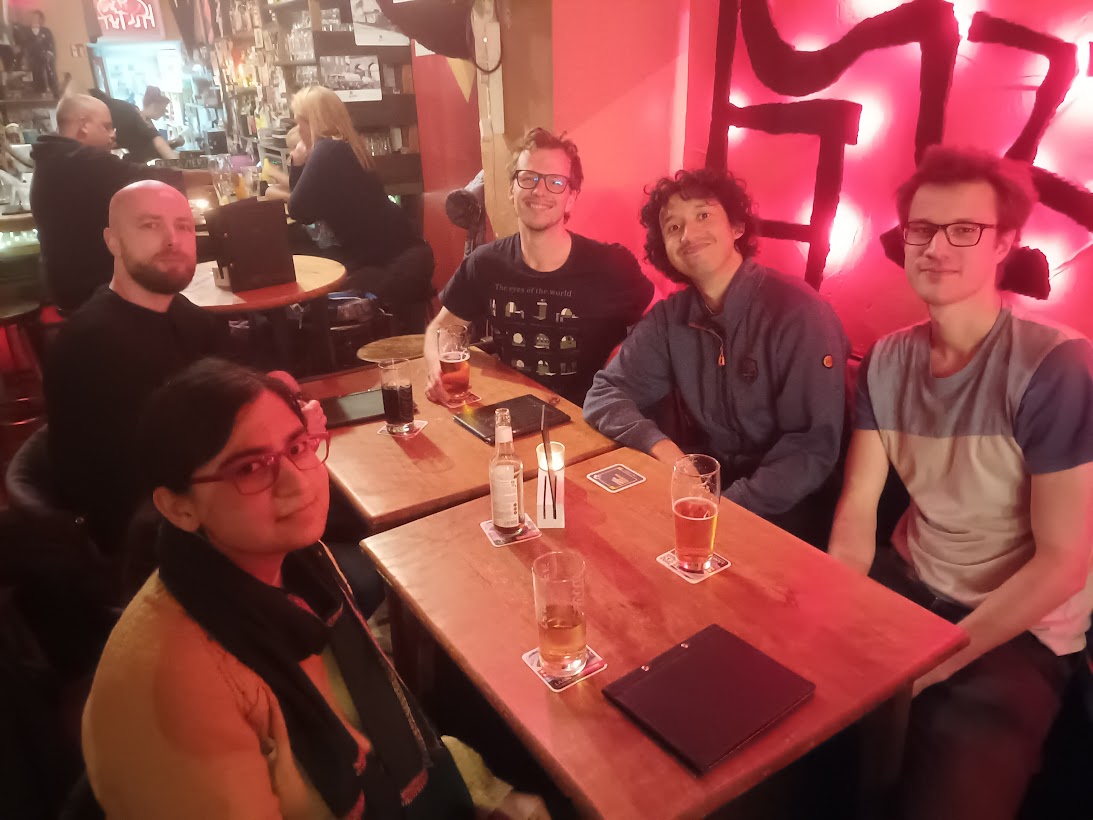
Ayesha Arshad Arain successfully defended her master thesis (Analyzing the candidate catalogue of hot subdwarfs using spectral energy distributions). We wish her all the best for the future.
A glimpse into the fast halo population of hot subdwarfs
October, 2024
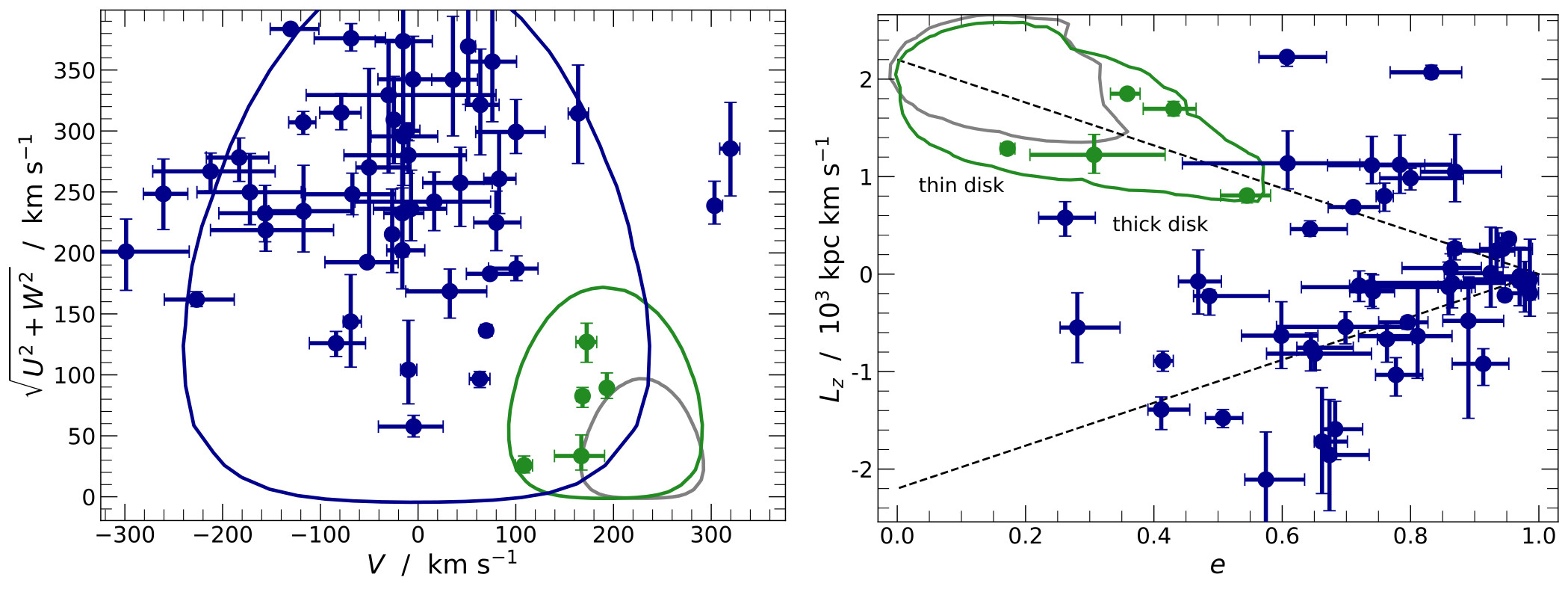
Toomre diagram of the sample of fast hot subdwarfs. Image credit: A&A.
This paper summarizes the final results of a long survey project going on for more than 15 years. Close hot subdwarf binaries with massive white dwarf companions have been proposed as possible progenitors of thermonuclear supernovae type Ia (SN Ia). If the supernova is triggered by stable mass transfer from the helium star, the companion should survive the explosion and should be accelerated to high velocities. The hypervelocity star US 708 is regarded as the prototype for such an ejected companion. To find more of those objects we conducted an extensive spectroscopic survey. Combining the results from quantitative spectroscopic analyses with space-based astrometry from Gaia Early Data Release 3 (EDR3) we determined the atmospheric and kinematic parameters of 53 fast hot subdwarf stars. None of these stars is unbound to the Galaxy. We therefore conclude that the fast sdO/B stars we found are likely to be extreme halo stars, which show a remarkably small close binary fraction. These results presented in a paper led by Stephan Geier have been published in Astronomy & Astrophysics.
Second Tautenburg-Bamberg-Potsdam meeting in Tautenburg
10. October, 2024
With the second meeting with colleagues from the diverse research groups in Tautenburg, Bamberg and Potsdam we succeeded in starting a series. Besides the very interesting science talks we were perfectly well hosted in Tautenburg, including guided tours, lots of cake and barbecue. Many thanks to Veronika and her team for organising this. We look forward to the next meeting in Bamberg.
Congratulations to Lysann Bode
1. October, 2024
Lysann Bode successfully finished the bachelor by submitting her thesis (Searching for hot subluminous runaway candidates in Gaia). We wish her all the best for the future.
National award for Matti Dorsch
10. September, 2024
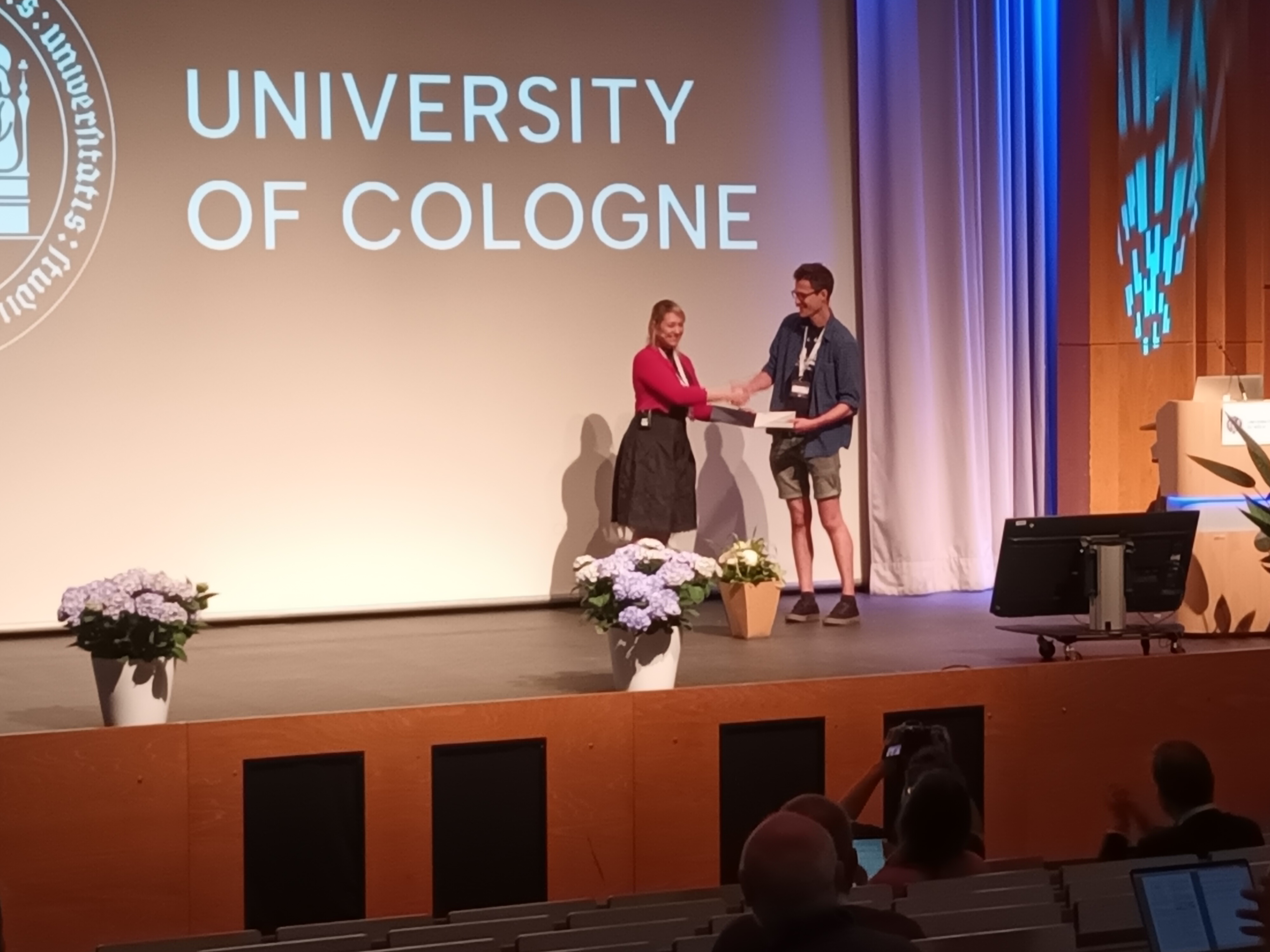
Matti receiving the prize certificate from AG president Stefanie Walch-Gassner. Image credit: S. Geier
The annual meeting of the Astronomische Gesellschaft in Cologne was a special one
for us this year, because Matti Dorsch was awarded with the prestigous
PhD prize and gave an invited plenary talk. Congratulations from all of us!
Back in Ondrejov
August/September, 2024
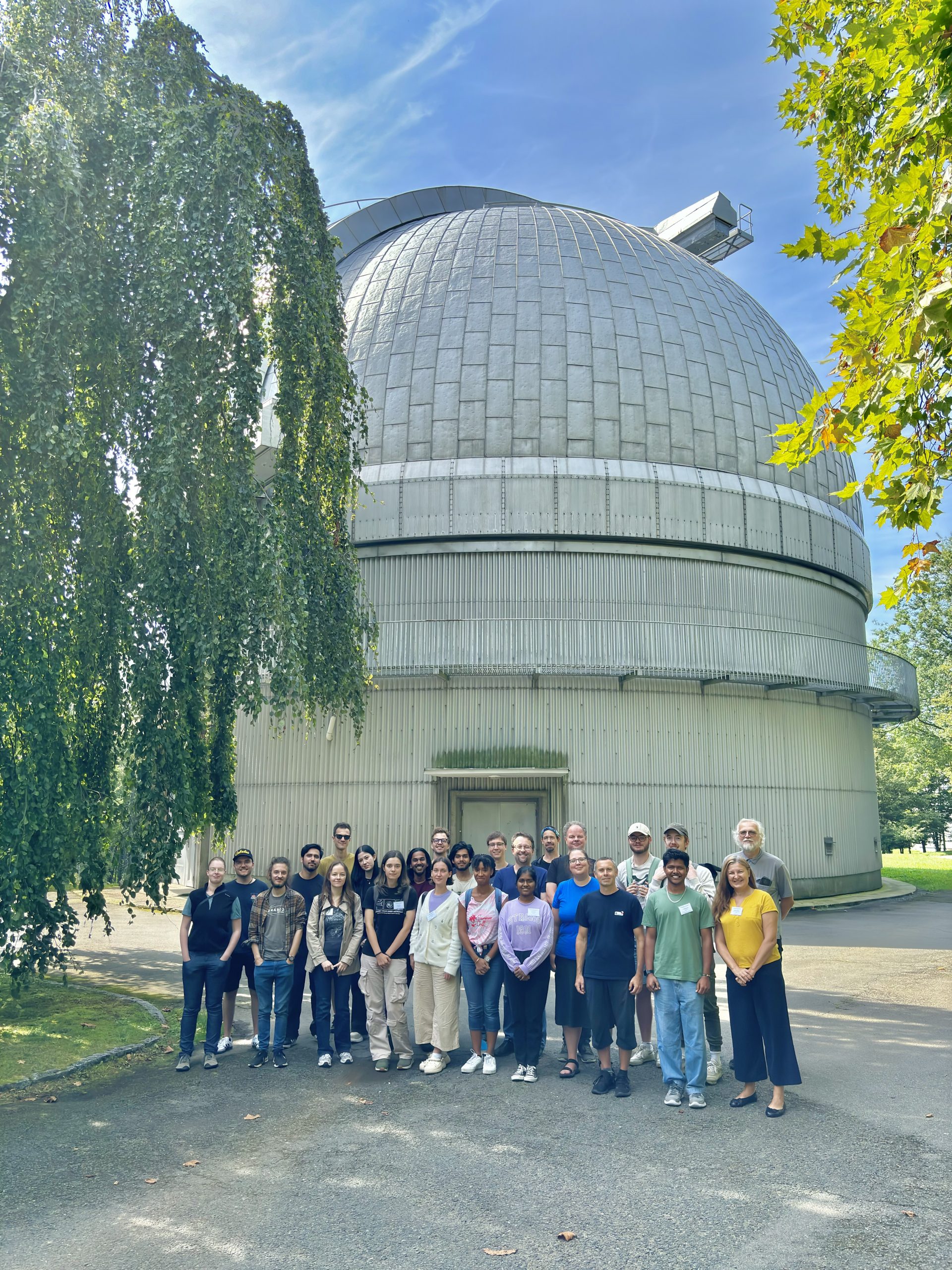
Group picture of the workshop.
The annual research workshop in Ondrejov with students from UP, Brno
and Prague became a good tradition. This year we were accompanied by
our friends Veronika Schaffenroth and Eike Guenther from Tautenburg
together with some of their students. And for the first time the
students could observe with telescopes in Tautenburg and Chile at the
same time.
Congratulations to Fabian Voigt
31. July, 2024
Fabian Voigt successfully finished the bachelor by submitting his thesis (Radial velocity study of hot subdwarfs in astrometric binaries). We wish him all the best for the master in physics.
Congratulations to Veronika Schaffenroth
31. July, 2024
As the first member of our group, Veronika successfully finished her habilitation at the University of Potsdam (Studying the influence of close companions on late stellar evolution). We wish her all the best in Tautenburg.
European White Dwarf Workshop in Barcelona
July, 2024
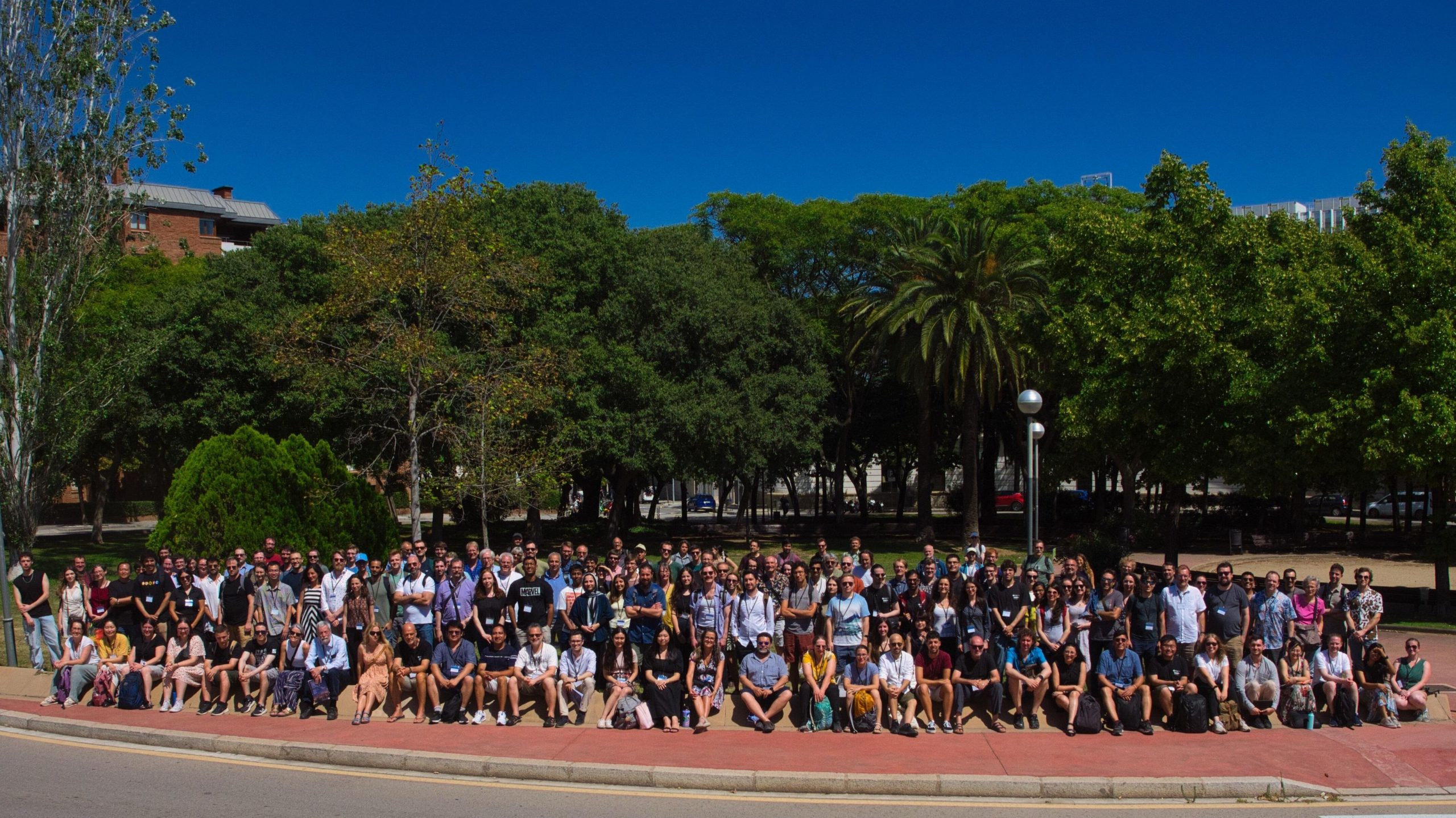
Group picture of EUROWD24.
The European White Dwarf Workshop celebrated its 50th anniversary in
Barcelona. We attended again with a strong group from Potsdam.
A complete census of hot subdwarfs in our neighbourhood
June, 2024

Colour-magnitude diagram of the 500 pc sample. Image credit: A&A.
This paper is the starting point of a whole series of papers dealing with the first volume-complete sample of spectroscopically confirmed hot subluminous stars out to 500 pc, defined using the accurate parallax measurements from the Gaia space mission data release 3 (DR3). The sample comprises a total of 397 members, with 305 identified as hot subdwarf stars, including 83 newly discovered systems. It allowed us to determine the space density, scale height and birth rate of hot subdwarfs revealing some tensions with predictions from theory. These results presented in a paper led by Harry Dawson have now been published in Astronomy & Astrophysics.
Blue horizontal branch stars revisited
May, 2024

Spectral energy distribution of a candidate BHB star from the catalogue. Image credit: A&A.
In this paper we continued our work generating catalogues of stars that are found on the horizontal branch of the Hertzsprung-Russell (HR) diagram. Understanding such very old stars gives us an insights into the mechanisms and processes that influence the properties of stars as they evolve over time. The starting point for this catalogue is the rich dataset from the European Space Agency's Gaia space observatory’s astrometric and photometric measurements in their latest data release. Blue horizontal-branch (BHB) stars aren’t, however, the only stars that occupy this region of the HR diagram and using temperature and luminosity alone to identify such stars leaves many contaminants in such a catalogue. We have refined and extended our 2021 catalogue of blue horizontal-branch stars using spectra acquired during the “Workshops on observing techniques” in 2021 – 2023. These workshops we held in the Ondrejov Observatory in the Czech Republic and jointly organised between Potsdam University and the Astronomical Institute of the Czech Academy of Sciences. These spectra together with the use of spectral energy distributions have allowed us to increase the number of BHB candidates identified as well as reduce the contamination levels and independently verify these levels of contamination in the new catalogue. This catalogue and the new methods developed have been presented in a paper led by Rick Culpan has now been published in Astronomy & Astrophysics.
Congratulations to Kyle Davis
8. January, 2024
Kyle Davis successfully defended his master thesis (Spectral classification and analysis of hot white dwarfs in the LAMOST Data Release 8). We send our greetings to Texas and wish him all the best for the future.